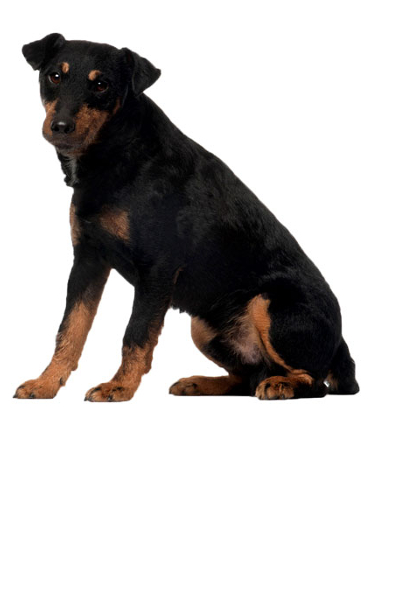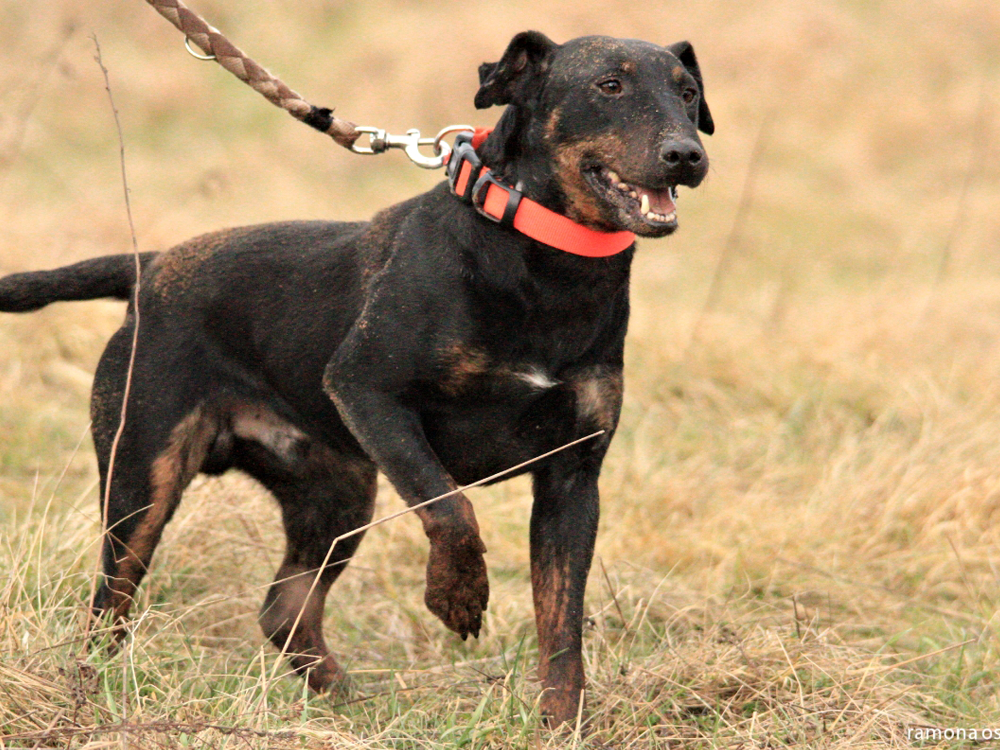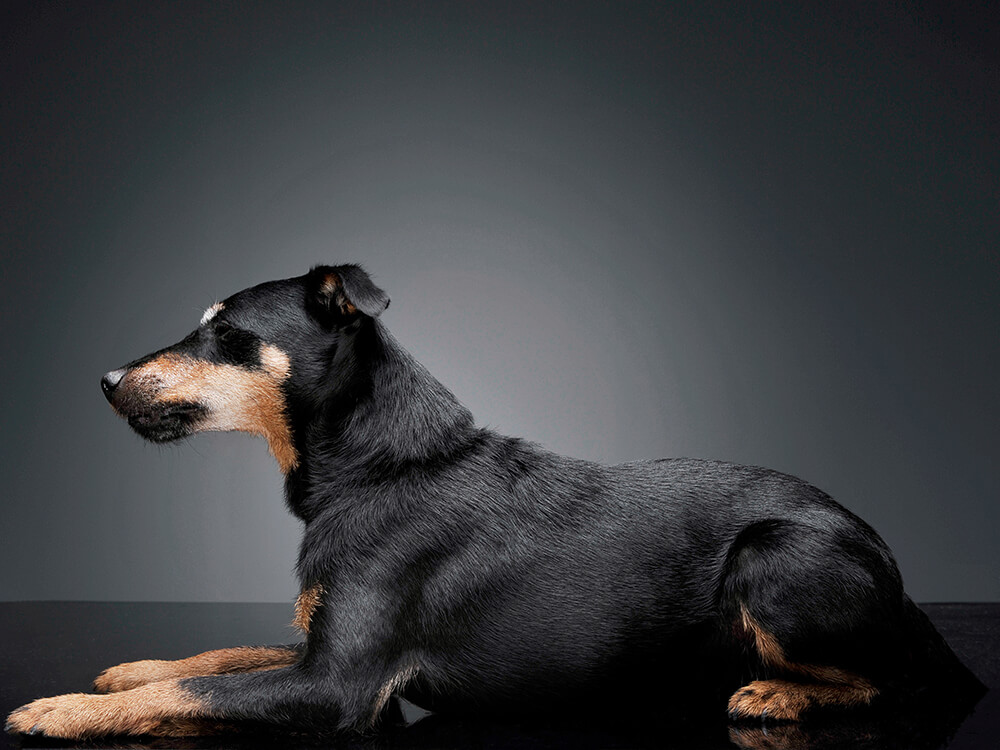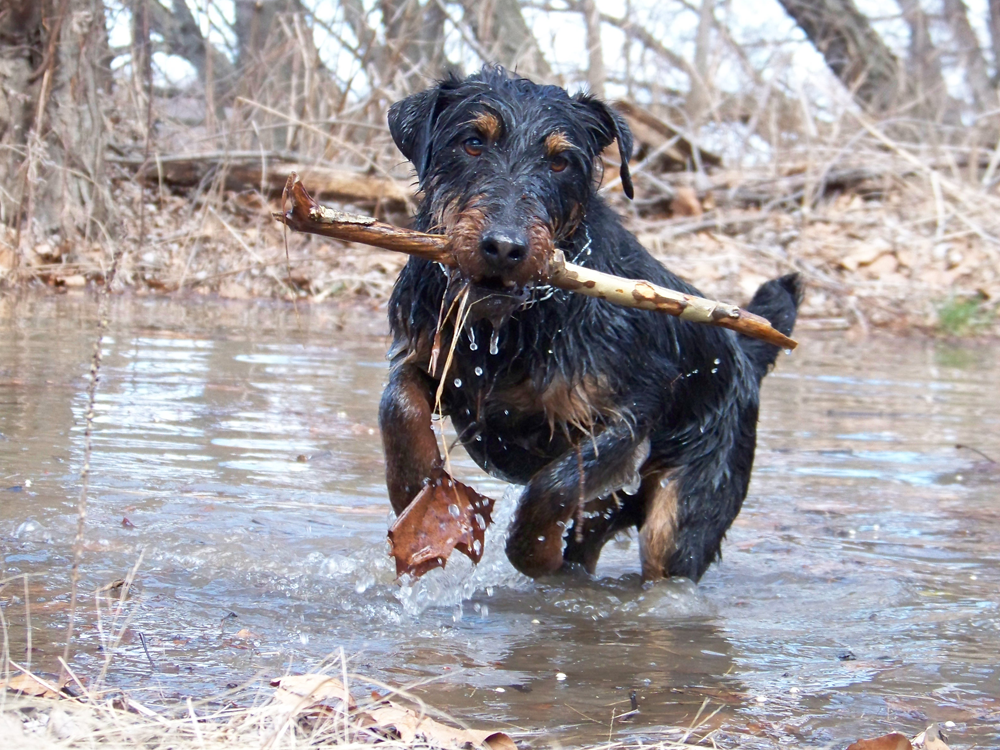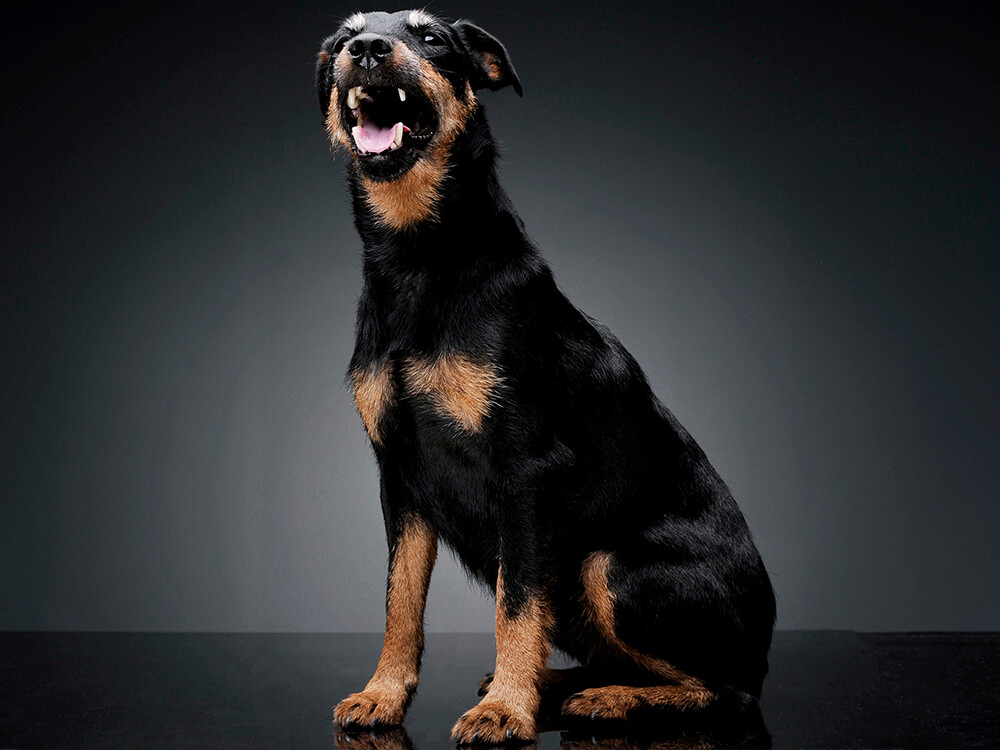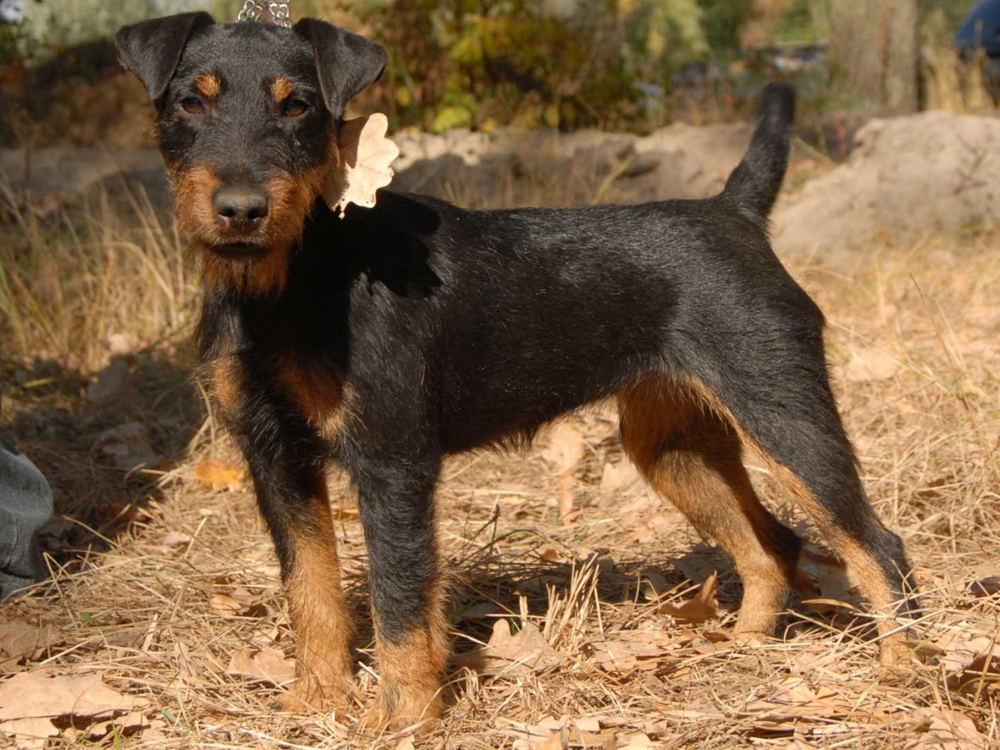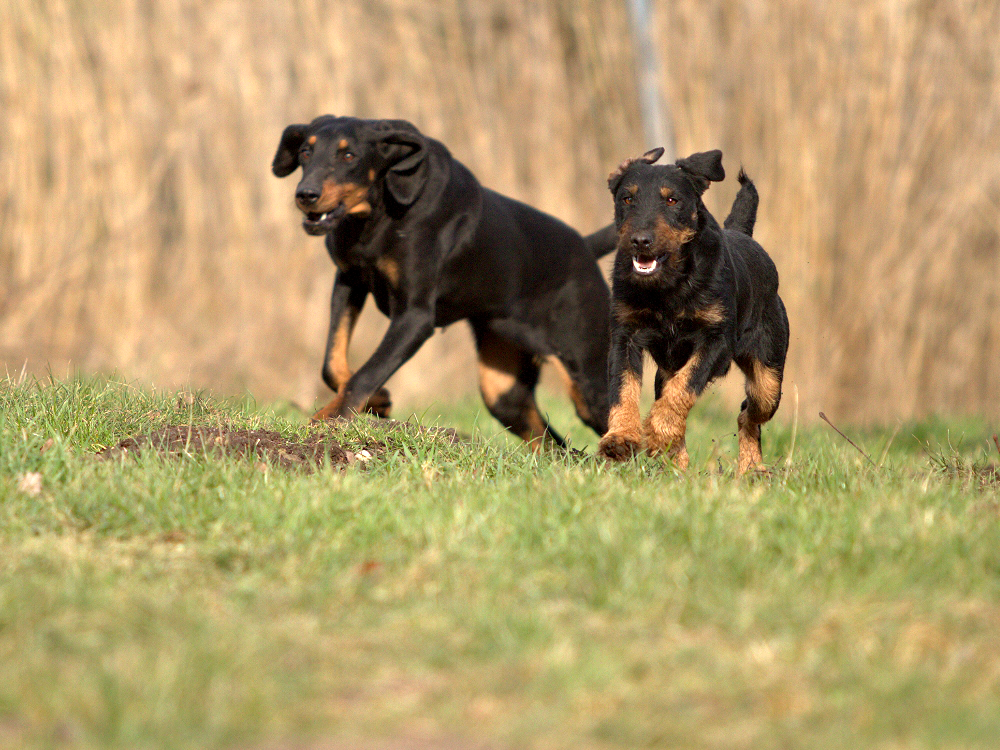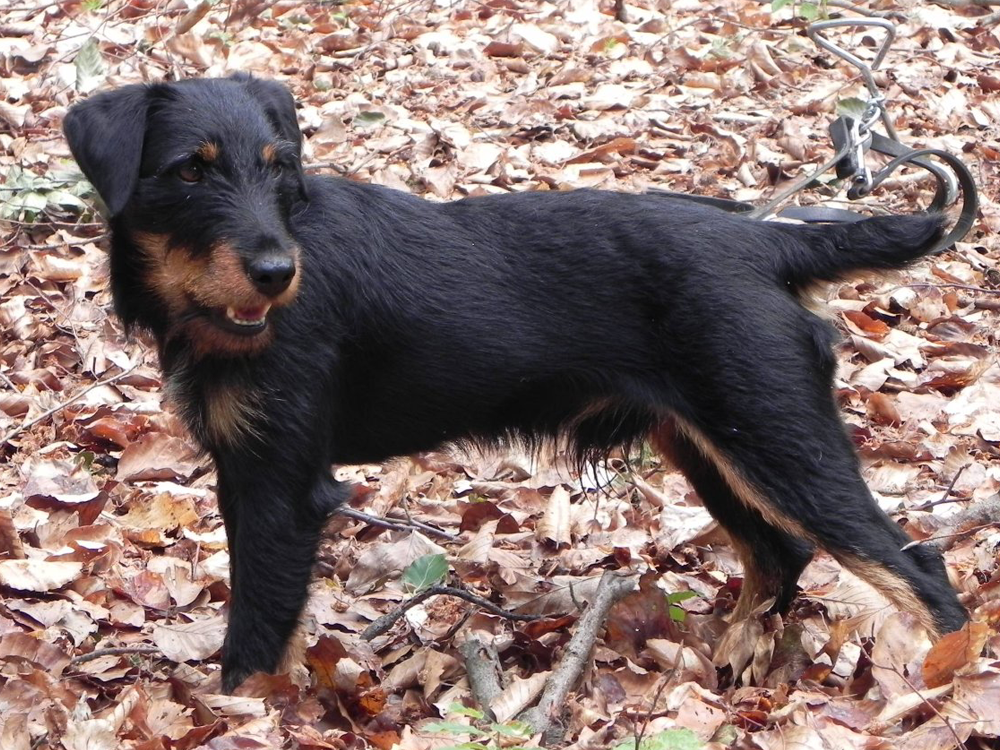
Jagdterrier Breed Pictures
Vital Breed Stats
| Height: | 33 - 40 cm M | 33 - 40 cm F |
| Weight: | 9 - 10 kg M | 9 - 10 kg F |
| Breed Group: | Working Dog Group |
| Life Expectancy: | 13 - 15 years |
| KC Registered: | No |
Breed Characteristics
| Size: |  |
| Grooming: |  |
| Exercise Level: |  |
| Trainability: |  |
| Barking Level: |  |
| Good with Children: |  |
| Good with other pets: |  |
| Affectionate: |  |
| Protective: |  |
| Cost to Keep: |  |
Give a thumbs up if you love the Jagdterrier

0
More About the Breed
History
The Jagdterrier is relatively a new breed developed in the 1920s in Germany. It was bred by a small group of game managers and hunters who left the Fox Terrier Club with the intention of breeding a tenacious hunting dog. Its ancestor breeds are believed to be Old English Fox Terrier, the Black and Tan Hunting Terrier, the Fox Terrier, the English Wirehaired Terrier, and the Welsh Terrier.
The small-statured Jagdterrier turned into a fierce hunter that bravely took on small animals like badgers and foxes, as well as large prey like wild boars, bobcats and cougars. It slowly became popular outside Germany as an excellent working dog and companion. However, its number remains to be low. Although the Jagdterrier is recognised by various major international organisations like the American Kennel Club and United Kennel Club, it is not registered with The Kennel Club.
Appearance
The Jagdterrier is small breed that is sturdy and compact. Weighing 17 to 22 pounds and standing 33 to 40 centimetres, it boasts of an athletic and alert appearance while at work, at the same time a regal look when at rest. It has a long wedge-shaped head, prominent cheeks, short muzzles, and a strong jaw with a perfect scissor bite. It has black or brown eyes that give off a vigilant and fiery expression, a black nose (brown is acceptable for brown coats), and V-shaped ears.
Jagdterriers can have a harsh or smooth coat, or even have a texture in between the two. Their coats are thick and dense, protecting them from harsh weather conditions and rough terrains. They come in the following colours: black and brown, black and grey, and dark brown. These colours usually have red, yellow or lighter markings on the eyebrows, chest, legs, and back-ends.
Grooming
Temperament
Intelligence
Nutrition
Understanding basic nutritional needs of breeds is helpful but all dogs are unique. Talk to your veterinarian and ask for advice to ensure you are feeding your Jagdterrier appropriately.
Typical calorie needs of adult Jagdterriers per day:
- Senior and less active: up to 590 calories daily
- Typical adults: up to 660 calories daily
- Physically active/working dogs: up to 730 calories daily
Feeding
Health
Exercise
Cost of Ownership
Dogs may be one of the most expensive pets to own since they have more complex needs and longer lifespans. Apart from food, there are other considerations you need to take into account. How much does it cost to raise a Jagdterrier? Let’s begin with purchasing a well-bred puppy. Since this breed is rare in the UK, you will have to be on a waiting list and expect to pay no less than £500 and higher to £700. Insurance costs will be around £20 to 40, depending on your location, your pet’s age or whether it has been neutered or spayed.
Monthly food costs will set you back £20 to £30, while basic equipment (bed, leash, collar, bowls, grooming kit, etc.) will initially cost £200. An important expense will be preventive care and veterinary check-ups, which will be £600 to £1,000 annually, depending on the services you avail. The rates will be higher if your pet will require any major surgeries or treatments in case it gets sick or gets into an accident.
Is a Jagdterrier Right for You?
- The Jagdterrier is a friendly and personable breed.
- It is an energetic breed with high exercise needs.
- It is not ideal for first-time owners and families with babies or toddlers.
- The breed is low maintenance in the grooming front.
- It has not been recognised by The Kennel Club.
